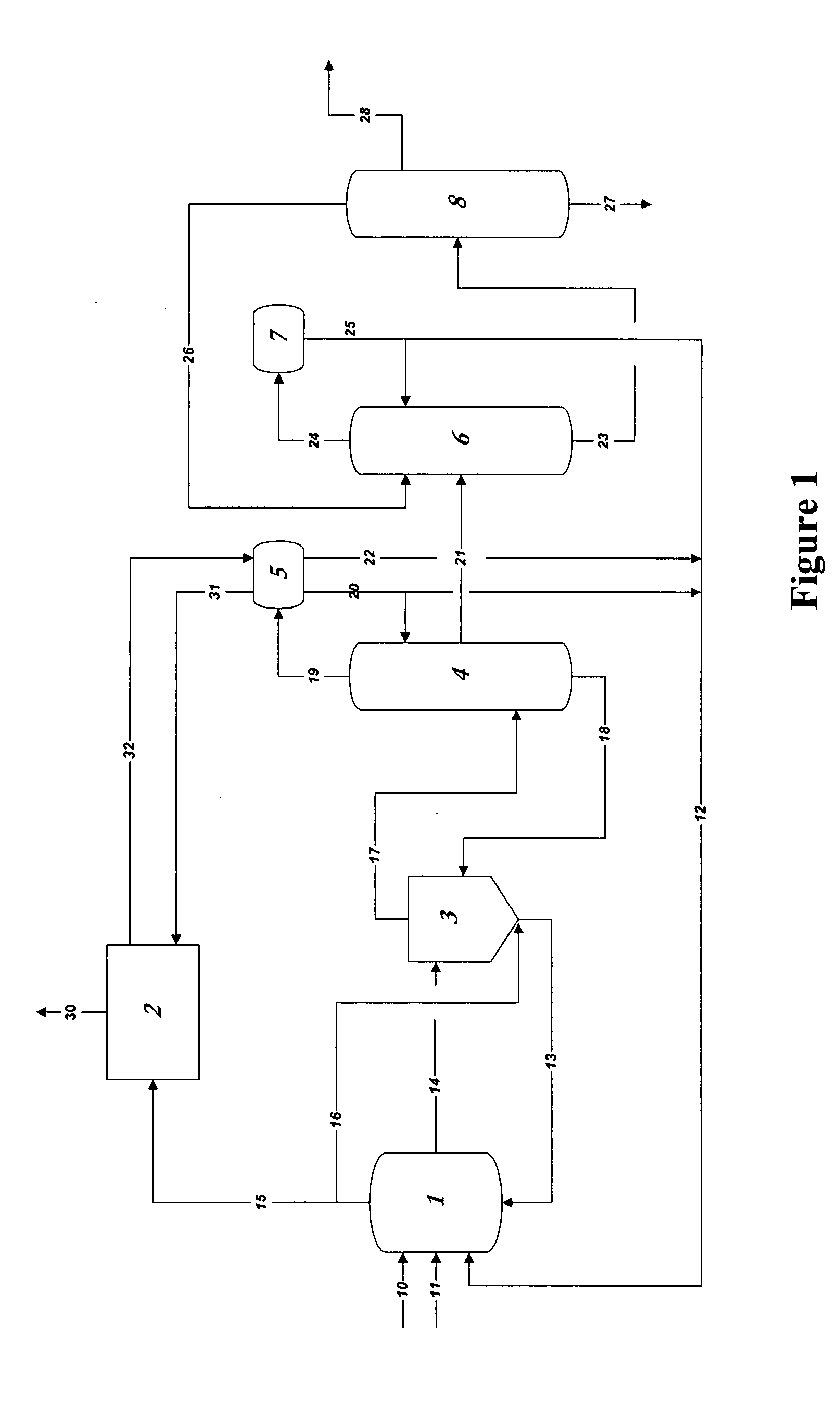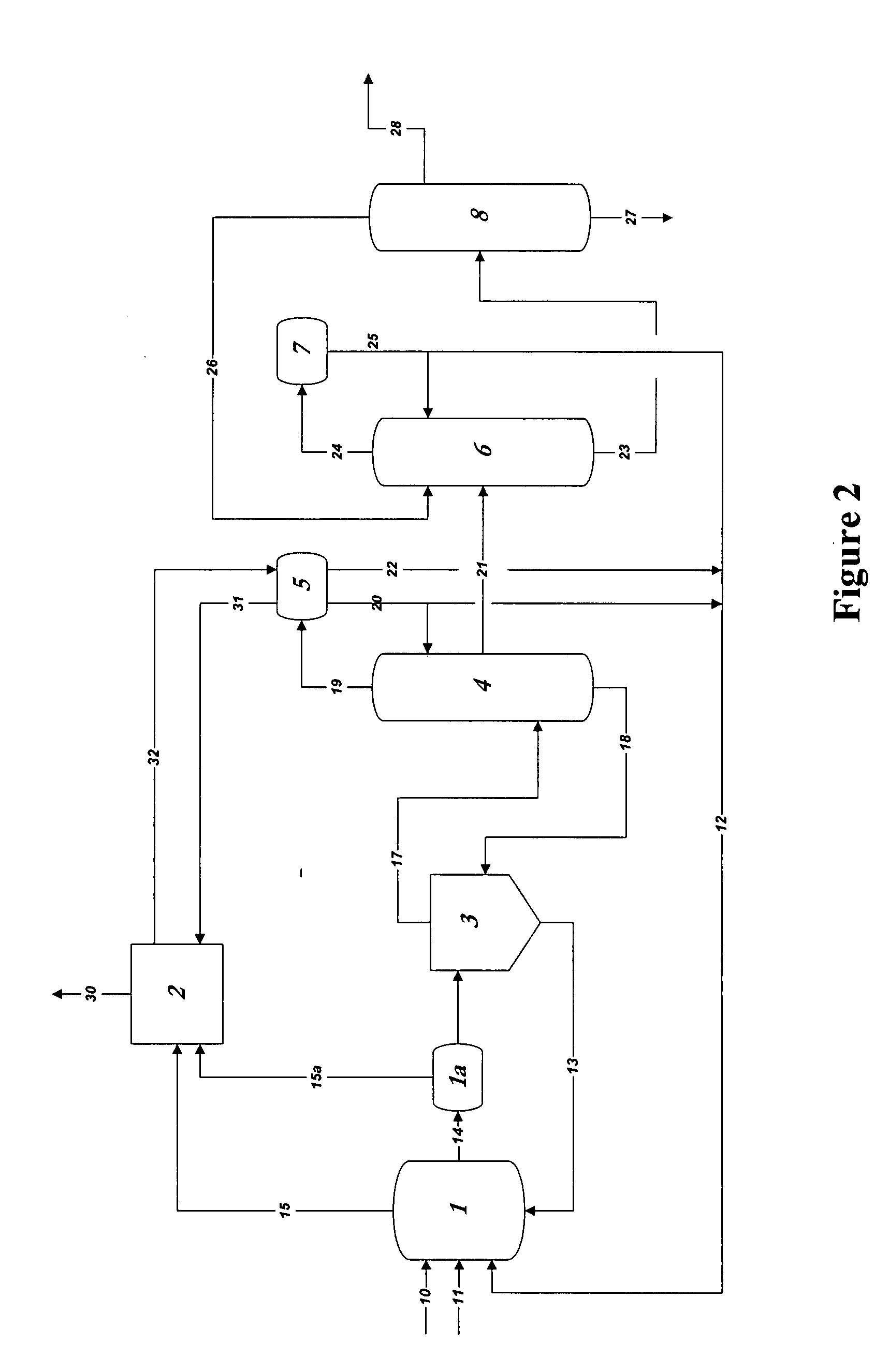Control of formic acid impurities in industrial glacial acetic acid
- Summary
- Abstract
- Description
- Claims
- Application Information
AI Technical Summary
Benefits of technology
Problems solved by technology
Method used
Image
Examples
Embodiment Construction
A. General Rhodium-Catalyzed Methanol Carbonylation Reaction to Make Acetic Acid
[0075]To produce acetic acid by methanol carbonylation, methanol is reacted with carbon monoxide in the presence of a catalyst. The general formula is as follows:
CH3OH+CO CH3COOH
[0076]In the practice of the present invention, rhodium is used as the catalyst in methanol carbonylation process and renders the process highly selective. Methyl iodide is used as a promoter and an iodide salt is maintained in the reaction medium to enhance stability of the rhodium catalyst. Water is also maintained from a finite amount up to 14 weight % in the reaction medium. A reaction system which can be employed, within which the present improvement is used, will be further explained below, comprises[0077](a) a liquid-phase or slurry type carbonylation reactor which optionally may include a so-called “converter” reactor,[0078](b) a “flasher” vessel, and[0079](c) a purification system consisting of distillation and vent scru...
PUM
| Property | Measurement | Unit |
|---|---|---|
| Fraction | aaaaa | aaaaa |
| Fraction | aaaaa | aaaaa |
| Fraction | aaaaa | aaaaa |
Abstract
Description
Claims
Application Information
 Login to View More
Login to View More - R&D
- Intellectual Property
- Life Sciences
- Materials
- Tech Scout
- Unparalleled Data Quality
- Higher Quality Content
- 60% Fewer Hallucinations
Browse by: Latest US Patents, China's latest patents, Technical Efficacy Thesaurus, Application Domain, Technology Topic, Popular Technical Reports.
© 2025 PatSnap. All rights reserved.Legal|Privacy policy|Modern Slavery Act Transparency Statement|Sitemap|About US| Contact US: help@patsnap.com



